Calle de Carretas is one of the most emblematic and traditional streets in the centre of Madrid. All pedestrians who come and go from Puerta del Sol pass along this small street that is usually crowded with people and without which the centre of the city would not be the same. Indeed, it is difficult to imagine taking a stroll around the old part of the city without walking through Calle de Carretas and going window-shopping, getting an ice-cream or having a slice of pizza, or maybe simply getting carried away and enjoying the joy and bustle of the city.
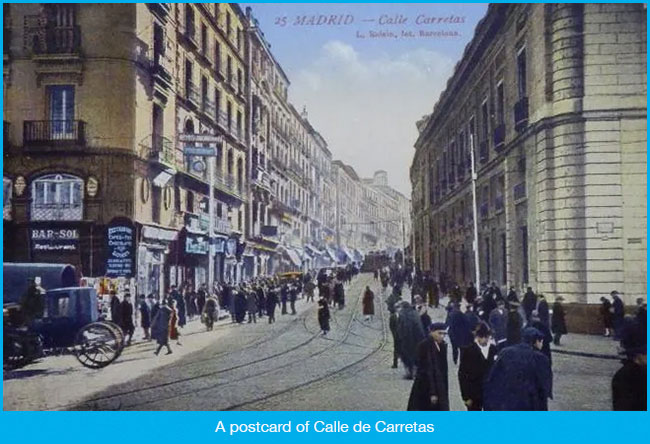
This mythical street, that connects Puerta del Sol and Plaza de Jacinto Benavente, is one of the busiest streets of the centre of Madrid, and thus, strolling through it and enjoying its atmosphere is obligatory for any visitor, no matter what. At present, Calle de Carretas has changed very much compared to what it was like years ago, especially since 2018 when it was pedestrianized.
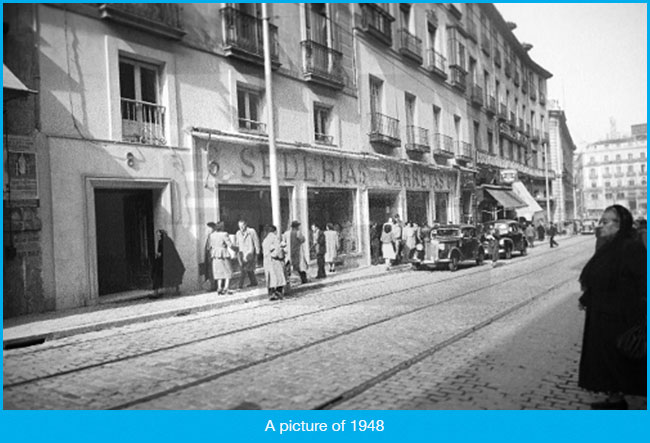
In our opinion, to pedestrianize it was a very good decision as this made the street much more habitable and lively. But, what was Calle de Carretas like decades ago? What was its origin? What secrets does this small street in the centre of Madrid hide? Today, we will discover everything about it in the blog of Estate One in our section A Walk in the Past, where we have already seen Madrid in the XIX century. Come with us!
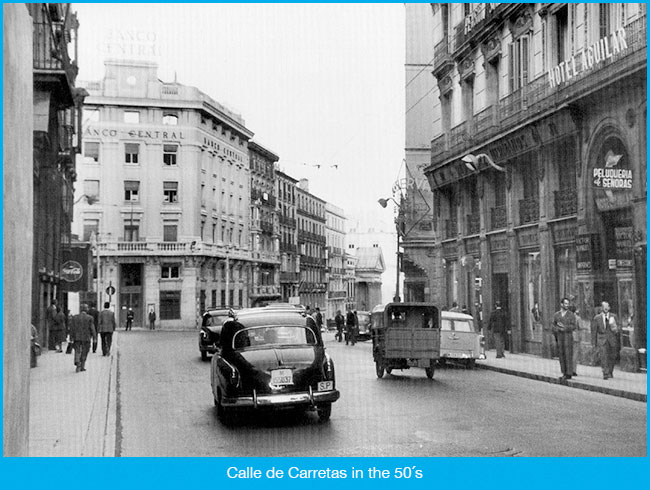
A CAFÉ FOR REMEMBRANCE
In order to trace the origins of Calle de Carretas we must go back to 1520 when the comunero movement started in Madrid. At that time, the comuneros were defending themselves from the troops of Carlos I and so they decided to build, in Puerta del Sol, a castle with a watchtower, difficult though it may seem nowadays. In those days, the comunero troops used wagons and drove them to the surrounding locations of Madrid, by way of barricades, so as to hold back the troops of the imperialist Emperor. The curious thing is that the sick people from Hospital San Ricardo, which was very close by, were crammed into the wagons for the purpose of infecting the imperial troops. This got so much attention that the Madrileños named the street Carretas, which in English means “wagons”.
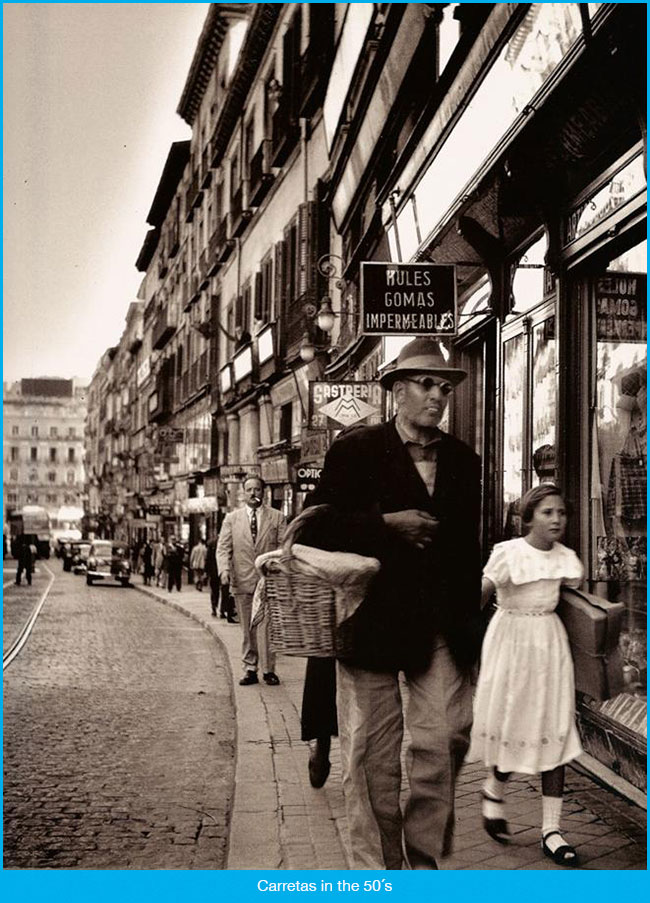
If we take a leap into the modern age we can say that, undoubtedly, businesses have been, and still are, the great protagonists of the street. Throughout the years, in Calle de Carretas there have been many different premises but above all, we must mention Café Pombo (also called Antiguo Café y Botillería de Pombo).
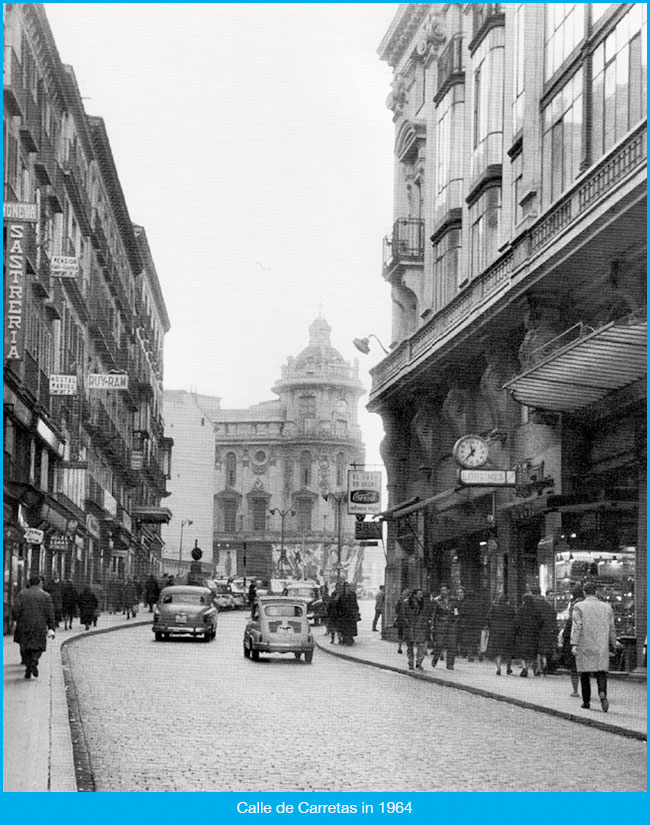
The premises were located in number 4 of Calle de Carretas and during decades it was frequented by bohemian artists and intellectuals of Madrid. Ramón Gómez de la Serna held literary gatherings there every Saturday night at the beginning of the 10´s. Furthermore, the painter José Gutiérrez Solana immortalized these gatherings in one of his paintings which will go down in history. These literary gatherings were so popular that they continued uninterruptedly till the beginning of the 40´s.
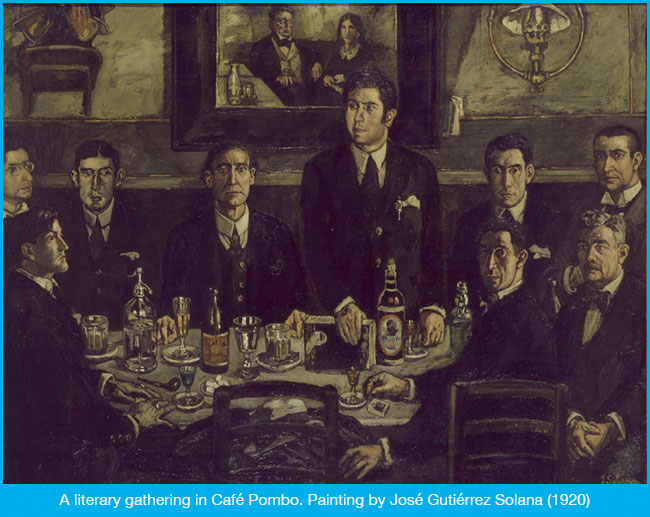
In addition to Café Pombo, we must mention Café la Juventud where different comedians got to perform at the beginning of the century. Later, Teatro Romea took its place but it was pulled down during the Civil War.
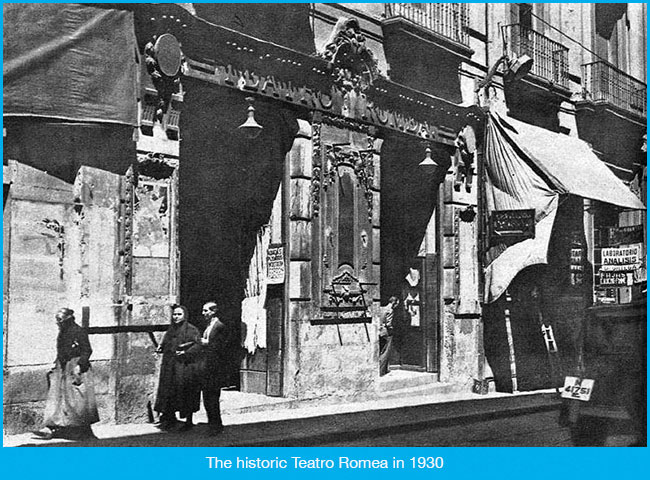
Finally, we want to mention Librería Moya, the oldest one in Madrid, specialized in books on medicine. This bookshop was founded in 1862 but,unfortunately, it has recently closed down. If you hurry up a bit, you can still see its shop window and mythical sign.
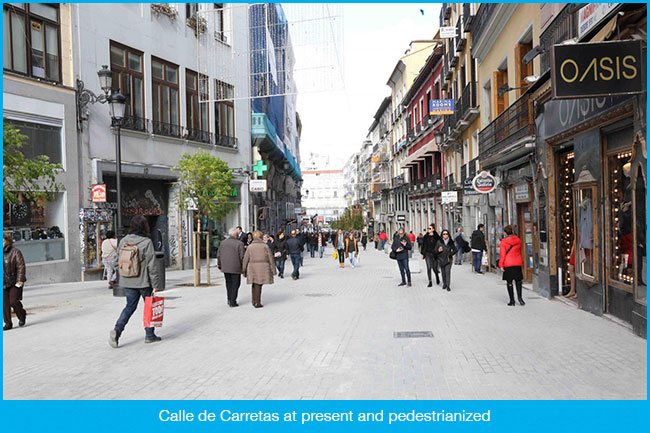
DID YOU KNOW THAT…?
Calle de Carretas, together with Calle Montera, was the first street in all Madrid to be paved and to have a sidewalk. They were both paved in 1834.
Modern picture: Diario de Madrid



 Spanish
Spanish English
English